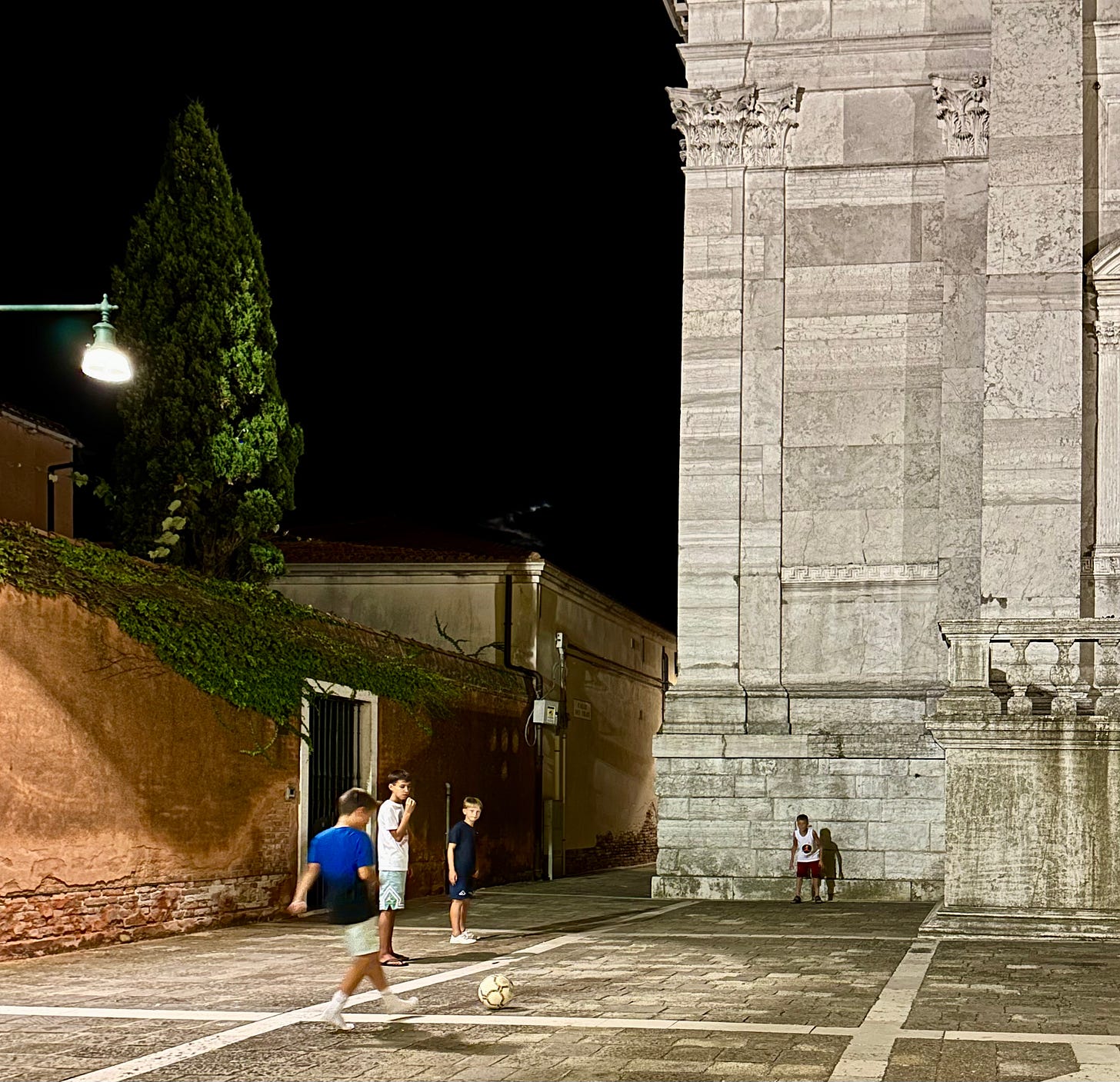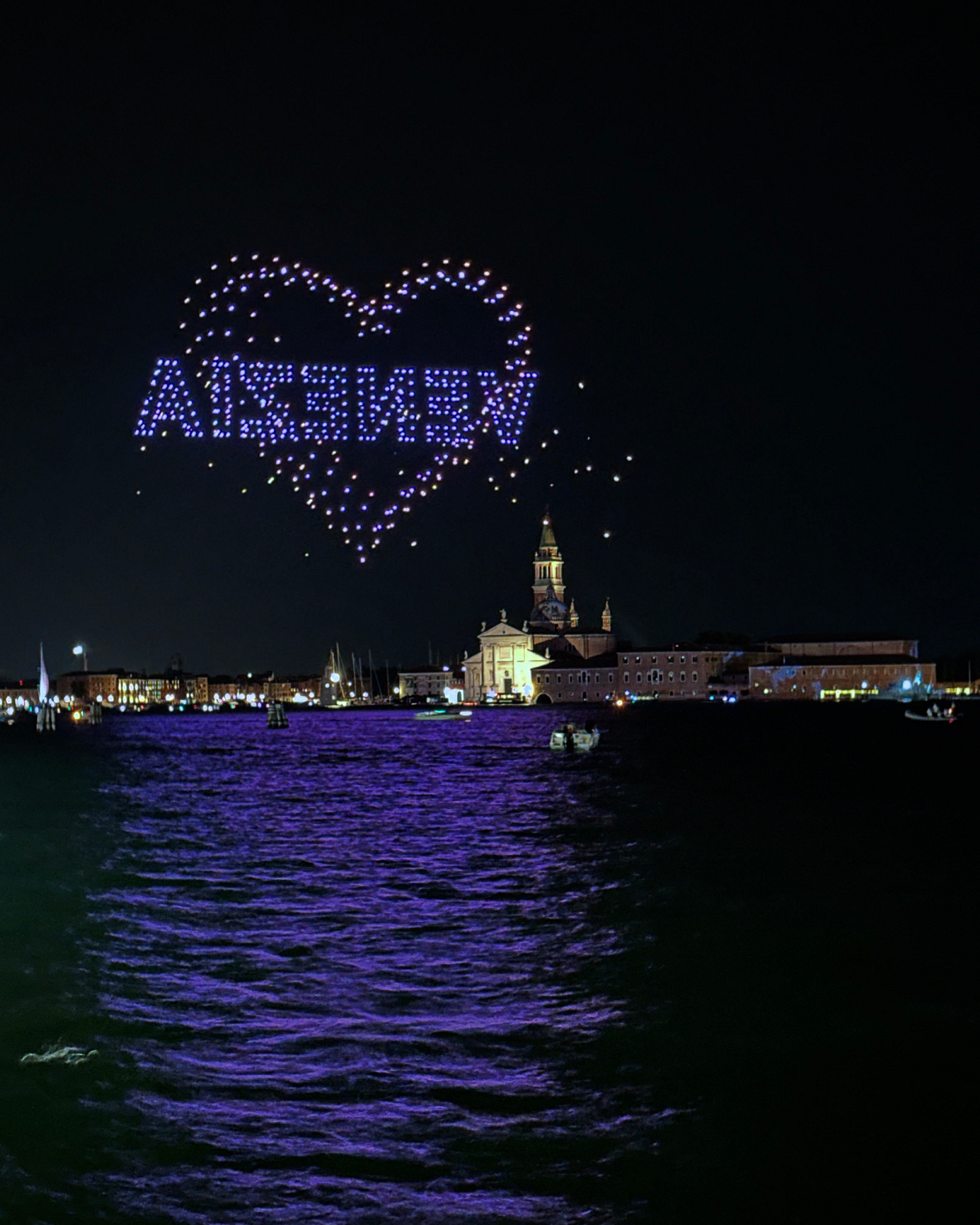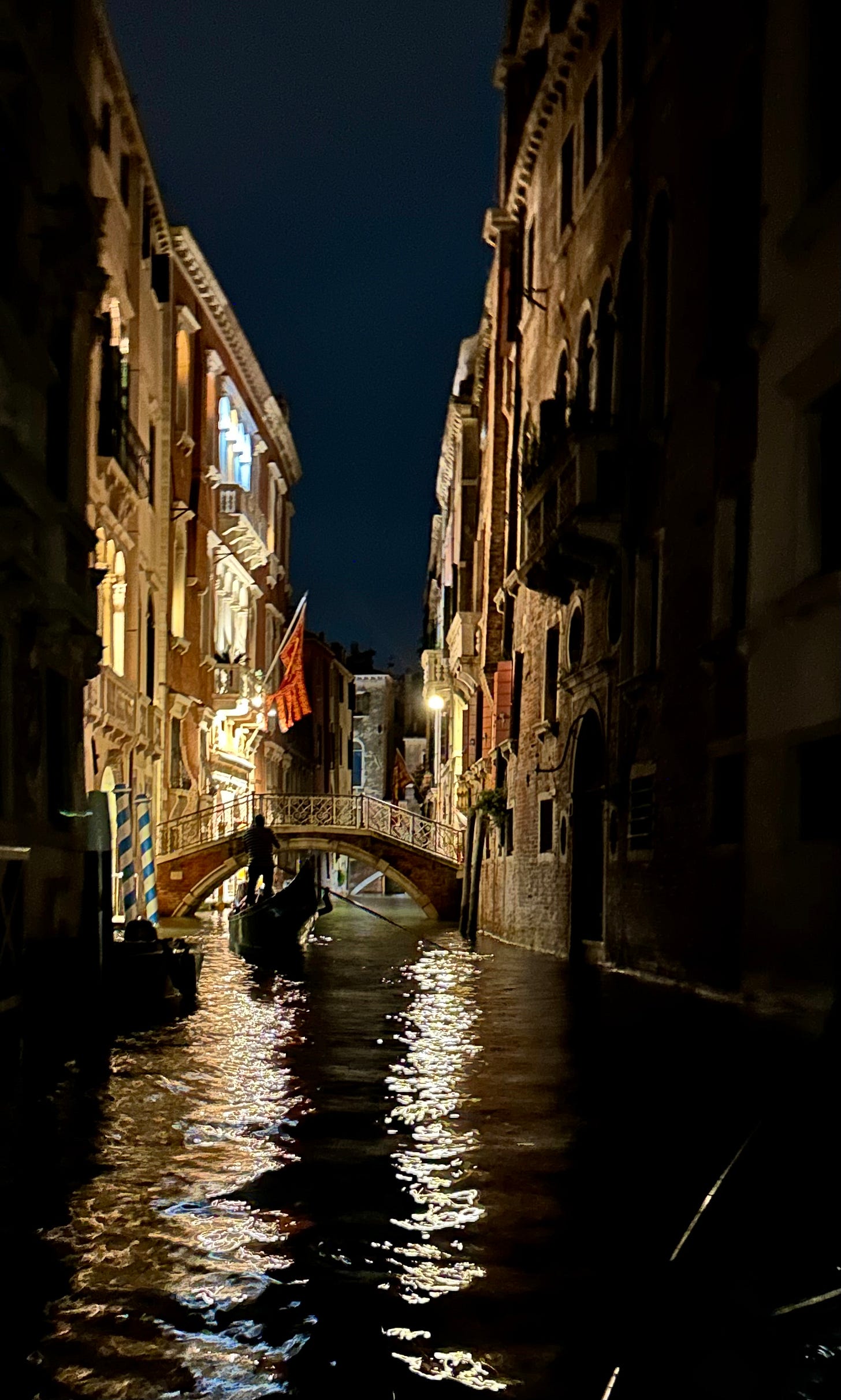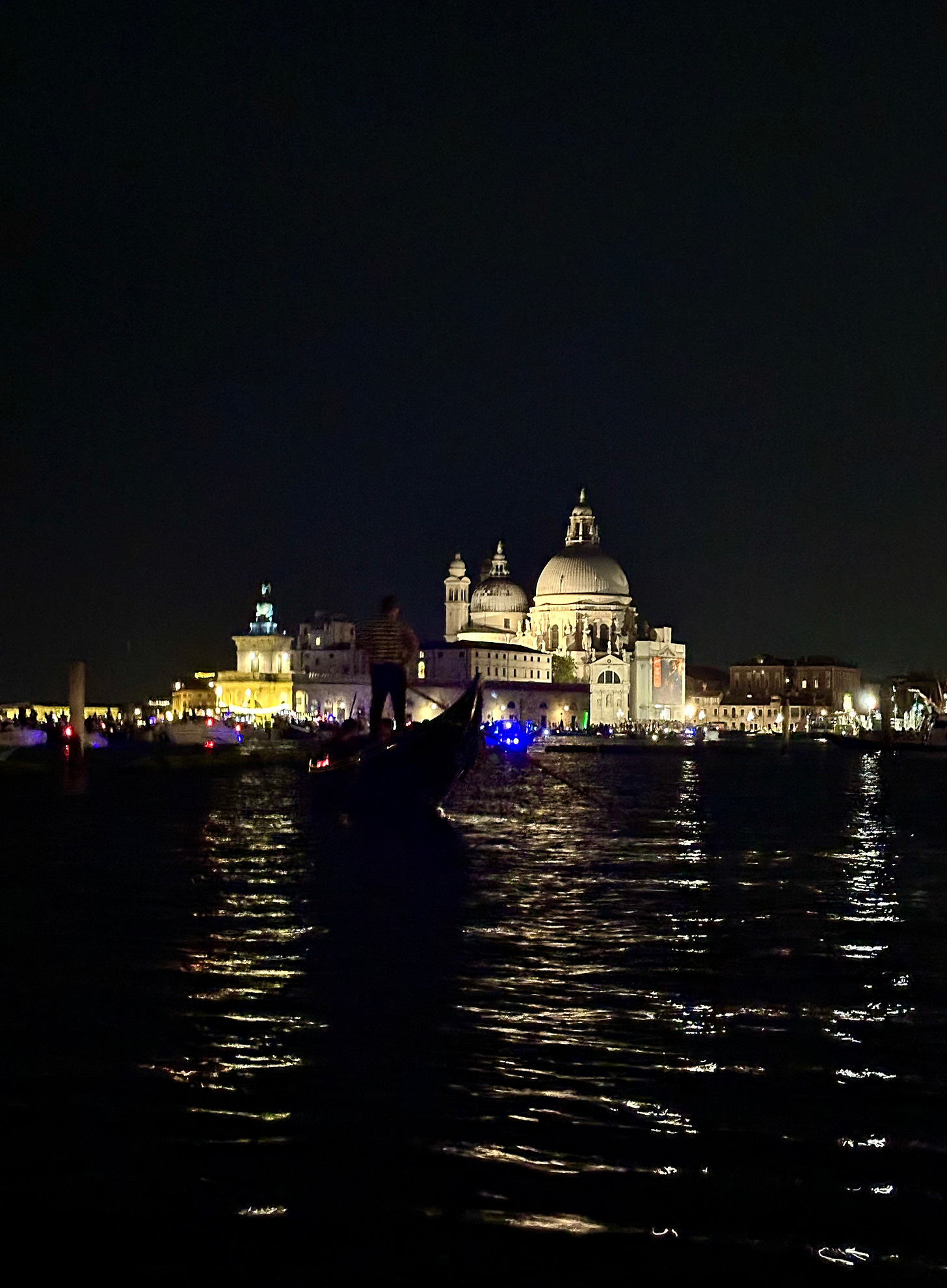Last weekend I was in Venice for La Festa del Redentore, the Feast of the Most Holy Redeemer, celebrated on the third Sunday in July. In La Serenissima it is a very big deal indeed. The origins of the celebrations lie in the plague which began in 1575. The epidemic swept through the city killing some fifty thousand people, among them Titian. On 4 September 1576 the Doge Alvise I Mocenigo vowed a church to dedicated to the Holy Redeemer on the island of Giudecca as an ex voto offering in return for the end of the plague which finally began to abate in December of 1576.
The vow to build a church was honoured, and Andrea Palladio, then almost seventy years old and Proto (chief architect) of the Venetian Republic, was commissioned to design a church dedicated to Il Santissimo Redentore. On 3 May of 1577 the foundation stone was laid by the Patriarch of Venice, Giovanni Trevisan, and the definitive end of the plague was declared on 13 July 1577. One third of the city’s population had died in two years. Eight days later, on the twenty-first of July, Doge Sebastian Venier—great hero of Lepanto—led a procession on a votive pontoon bridge constructed from Zattere across the Giudecca Canal to give thanks to the Redentore.

The church was eventually consecrated in 1592, and was entrusted by order of Pope Gregory XIII to the Capuchin Friars.
When I arrived in Venice on Friday evening, I was met by my chums Gillian and Mark at the station and we hopped on a vaporetto to the Accademia before cutting across to the Zattere and arriving at this year’s votive bridge just as the drone display sponsored by Campari (o tempora, o mores!) reached its denouement.

By now it was ten thirty and we walked across the wobbly bridge to the church. The evening air was, if not cooling exactly, at least becoming a little less oppressive. With much of the humidity of the lagoon trapped in the clinging shirt beneath my backpack, we entered the church.
I lit a candle proffered by the still-incumbent Capuchins in return for a donation. It seemed somehow the right thing to do, and the experience was suddenly extremely moving. As people kneeled before the high altar, their prayers assisted by the friars, the timelessness humanity of hope wiped away the best part of half a millennium and I could almost see Sebastian Venier leading the procession of 1577 towards me as we crossed back over the bridge.
The celebrations for the feast of Il Redentore begin in earnest just before midnight on the Saturday night, when spectacular fireworks are let off from barges in front of San Giorgio Maggiore—another of Palladio’s great Venetian churches—to ring in the feast day. For the occasion my pals had organised us all to take a gondola ride, my first.

We glided through the inky silence of back canals, evocative beyond words in late evening, before emerging on the bacino di San Marco to a riot of music and lights and sirens.

Boats of all sizes had gathered—super-yachts and mascarete; dinghies and sailing boats; fire and police launches—to see the spectacular fireworks. Against this most extraordinary backdrop they were scenographic beyond words as we bobbed around in front of the Doges’ Palace. It was just wonderful.











Hard to imagine an evening gets much better than this. Wow. I love the way the sacred and the commercial collide at events like these. For me, that balance between lighting a candle in a historic cathedral and a Campari-sponsored drone display is one of the strange but charming aspects of Italy in the 21st century. It doesn't please the purists, but somehow it's very true to the human experience. Amazing photos as well!
I so want to do this. I do love Venice.